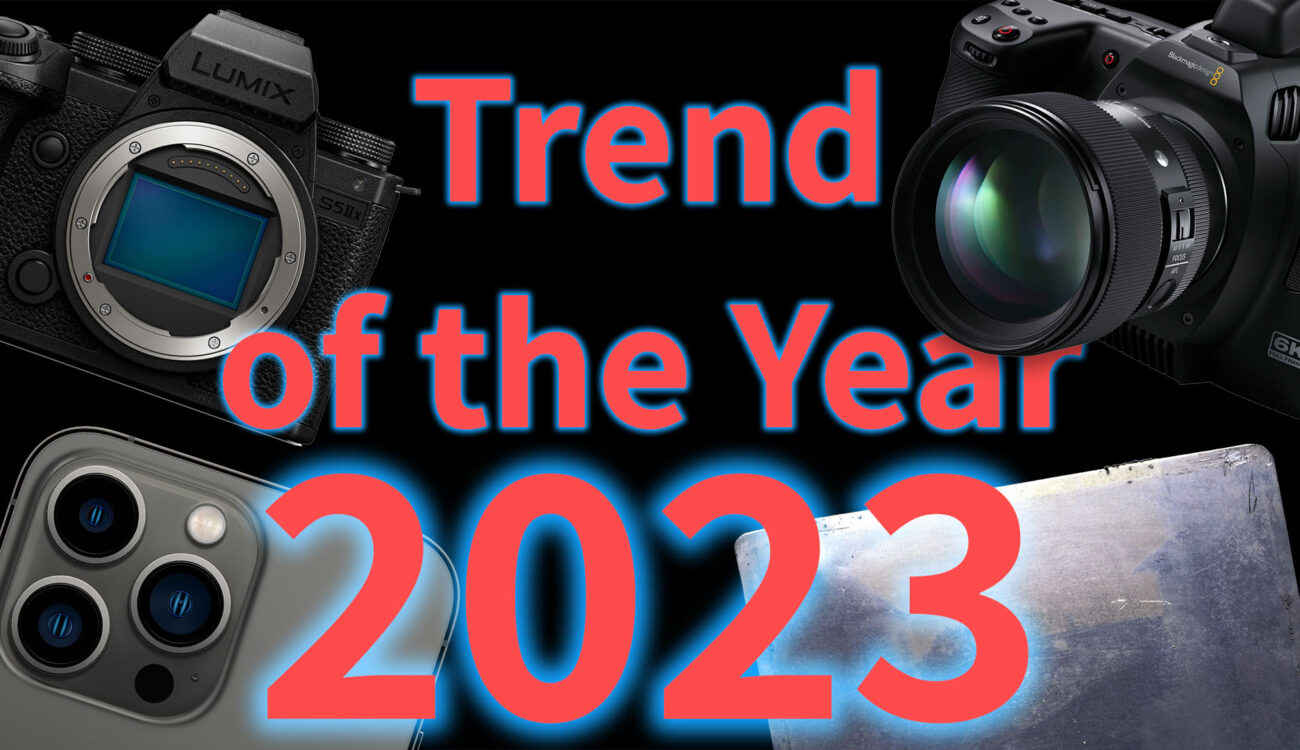
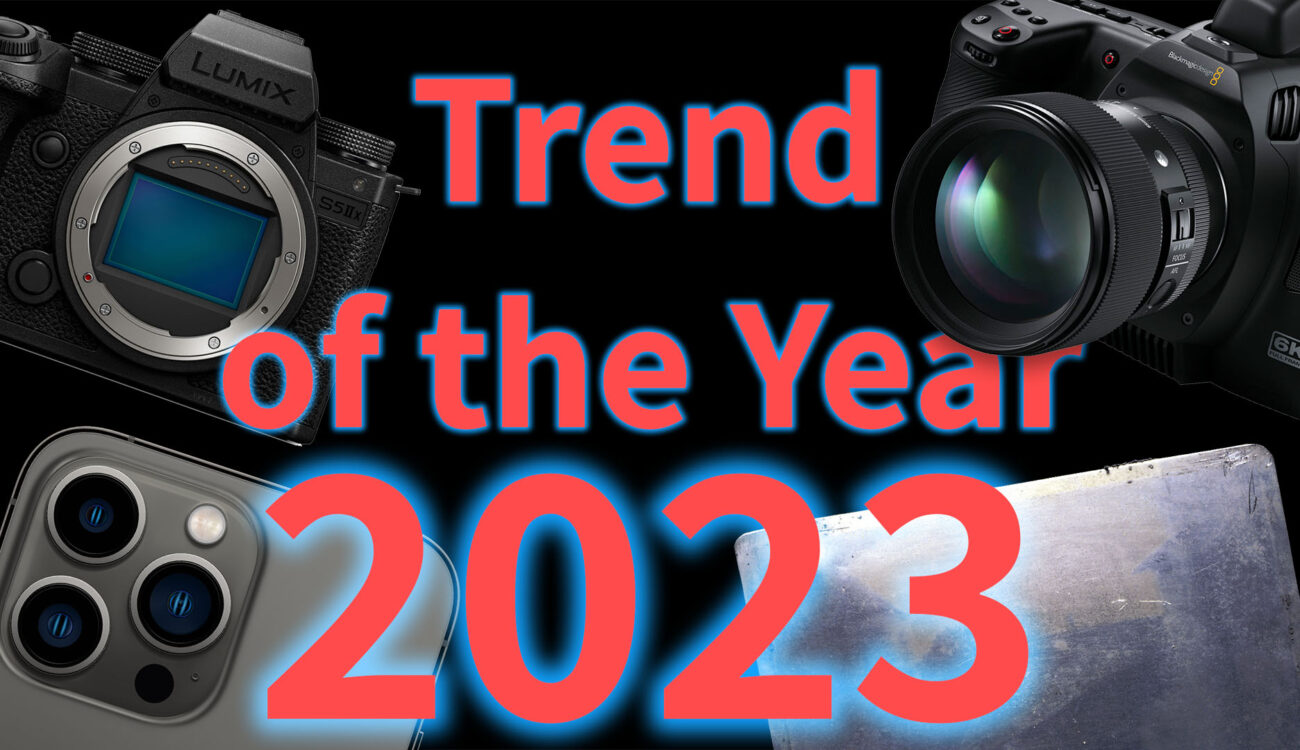
Although democratization is not a new trend, 2023 saw some significant movement and advancement in this field. Technological evolution and revolutions brought mass-media traits to more and more devices and people, giving rise to more diverse and varied voices. Whether it’s hybrid cameras with their expanding capabilities, advanced smartphones, namely the iPhone 15 Pro, or the profound impact of AI-generated imagery – 2023 had it all.
Democratization stands at the core of photography and is also a fundamental driving force behind every technological and communicational achievement since the dawn of civilization. In this article we won’t go as far as Chauvet Cave or Cueva De Las Manos, nor will we discuss the invention of print, but we will review the path of photography and film toward the democratization of knowledge and agency. Photographic imaging expanded the range of medium expression, but more importantly – enabled the untrained to capture (arguably) objective views of our world. While specific optical and chemical knowledge existed years before 1829, it was only then that it all accumulated into a single process creating a fixed photographic image.
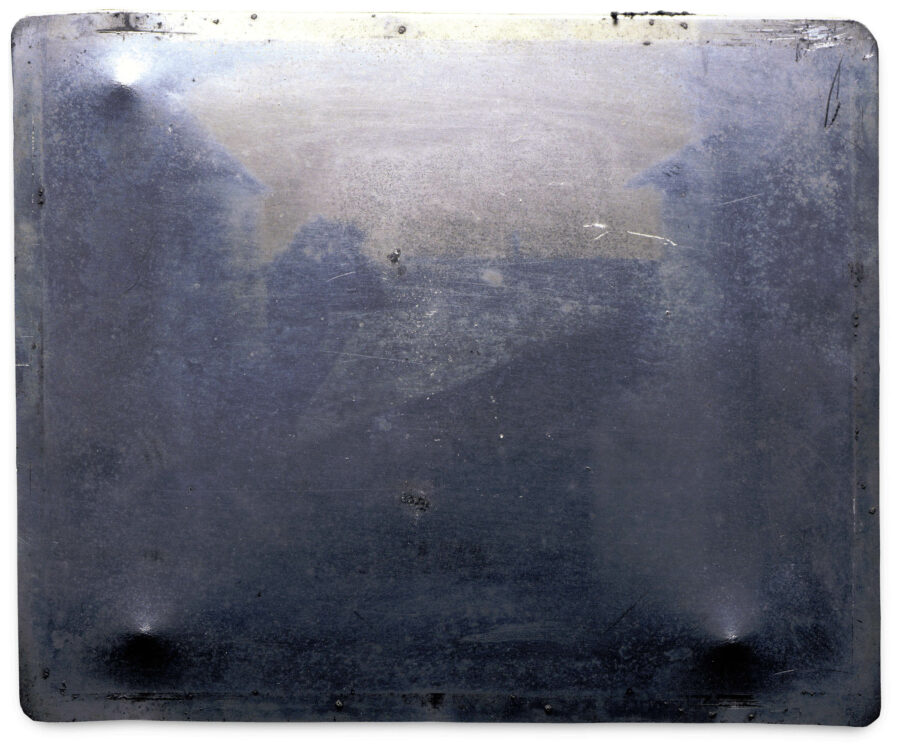
Great. Now everyone can do it.
I wasn’t there during the dawn of the 19th century, but I can safely assume that these kinds of quotes were pretty common. Suddenly there were no special skills required to “paint” a detailed landscape. All one had to do was to get their hands on metal plates, some chemical vats, a mobile darkroom, a huge camera, and one or two mules to go about. No more internships at the local painter’s workshop, honing one’s skills to perfection. But things were about to get much worse…
You push the button, we’ll do the rest.
This slogan probably encapsulates most of this article. Arguably even most of the photographic capture technological advancements throughout the years. Conceived by George Eastman’s Kodak circa 1900 sparked a revolution. The Slogan was attached to the “Brownie”, Kodak’s series of consumer-oriented cameras. (I won’t go into technical depth, mostly since it’s pointless). the Brownie was as simple as the slogan: You’d get it pre-loaded with a roll film, it had a shutter release and very limited focus, exposure presets, and a basic viewfinder and that’s about it. Once you were done with the roll, the camera was sent to Kodak’s lab in Rochester, NY together with the service fee. Not long after, it was sent back with the prints and a fresh roll of film.
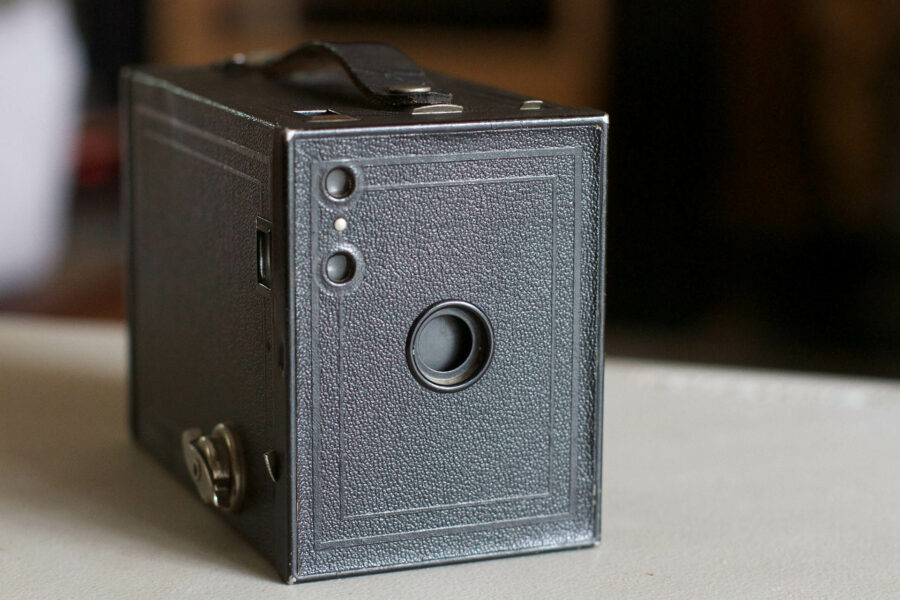
Just as the invention of photography opened the visual descriptive medium to many more people requiring much less proficiency and training, the Brownie mass-marketed visual storytelling. This is the act of democratization of agency at its core.
Great. Now everyone can do it. (2.0)
Well, that’s the gist of it. Democratization means everyone can do it (in theory at least). I guess no one will argue that we see more visual storytelling-enabled people today than ever before (which will probably still be true whenever you read this article). So why am I talking about 2023? Were there any significant scientific evolutions this year? Or perhaps, some seriously disruptive tech? A new way of visualizing the world? Well, the answer is, as ever so often, complicated. While there haven’t been any specific revolutions, 2023 saw an interesting convergence of technologies. I’ll argue that while all are evolutionary, the convergence of them might prove revolutionary. Let’s break it down.
The finest crops of 2023
2023 saw some exceptional filming and still photography gear being launched. On a personal note, I wonder when we will stop using this division of motion/still imagery regarding gear, but that’s another story. New and powerful hybrid cameras emerged, capable of better codecs, dynamic range, resolutions, and overall operability. Even more important: prices are lower than ever for this level of performance. Apple announced the iPhone 15 and shot an entire event with it.
AI-generated imagery took a huge leap forward, creating a flood of ever-improving visuals, and much better control over the generative process, and on the other hand – an immense effort is made to secure the authenticity of reality-based imagery. We’ll start with the dedicated cameras, move to smartphones, and down the rabbit hole of generative visuals. But before we get into it, have you voted camera of the year 2023 yet? If not, head over to our polls and let us know!
Cameras of 2023 – hybrid powerhouses
We’ve seen quite a few evolutions in the camera industry this year. Sony’s a9 III and the FUJIFILM GFX100 II (our review here) got most of the attention, but as impressive as they are, with the a9 III being almost $6,000, and the GXF100 II over $7,000, I suspect neither will have a significant effect in the way of democratization.
Sliding down the cost slope – Nikon fulfilled the promise of a lighter, smaller, and more affordable version of their revolutionary Z 9 in the form of the Z 8. At a mere $3,670, you can possess a tool capable of 8K and 4K120P. The stacked CMOS sensor enables fast readout speeds even in 8K resolution, and ample dynamic range. The camera also provides various codecs, starting at the efficient H.265 and up to ProRes 422 and N-Raw. Panasonic took matters even further with their LUMIX S5 IIX. While it might not be as speedy as the Z 8, it boasts some serious features. This nifty little camera can take 6K30P videos at H.265 (internally) or export them as either ProRes 422 to an external SSD, ProRes RAW video to an Atomos recorder, or as Braw to Blackmagic Video assist recorder. Though not a speed beast this $2,000 camera covers most of the mainstream independent filmmaker’s needs. The LUMIX isn’t only about the spec list, it also includes some of the best indication tools in the hybrid segment. Waveform, Vectorscope, and more will assist with precise exposure. The camera also includes what is probably the slickest, most streamlined active fan, hidden inside the pseudo prism.
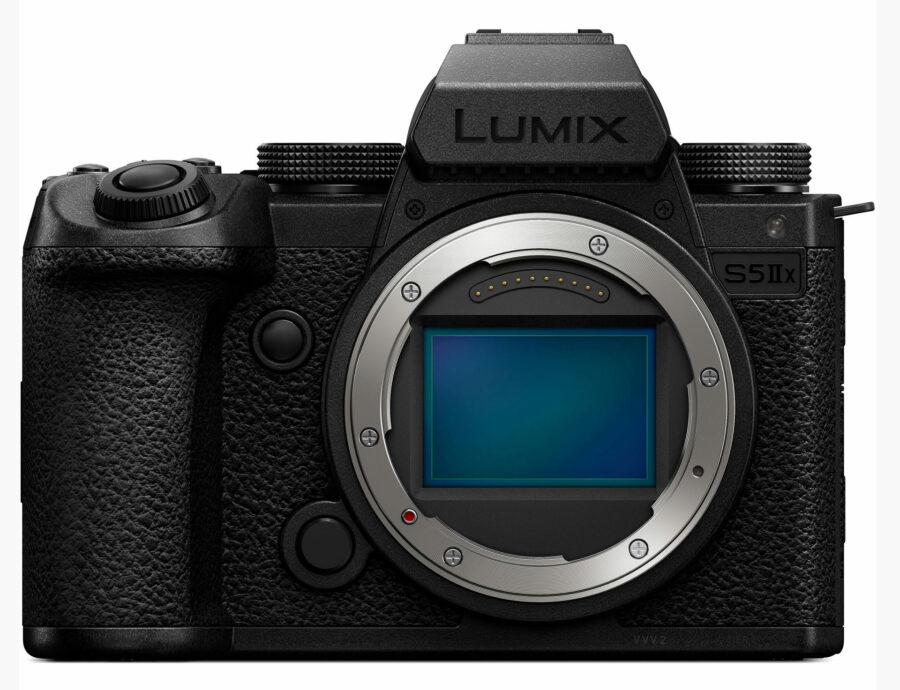
2023 was kind enough to provide us with two downsized versions (of sorts) of the impressive LUMIX S5 II X. One will have to compromise on sensor size, but once done – the G9 II provides a rather similar spec list and adds some nice slo-mo options, such as 4K 120P capability. In case you missed it, you can check out our review here. A surprising middle ground between the two LUMIXs is the FUJIFILM X-S20, with its 6K capable APS-C sensor, new AF algorithms, and a scaled-down IBIS unit.
Though not a hybrid per se, The Blackmagic Cinema Camera 6K is among the more affordable cinematic tools available. Coming from a long line of groundbreaking cameras, the current iteration of the Australian manufacturer provides a similar mix of top-notch features on a tight budget and compact size. This year’s camera omits the “Pocket” suffix but remains fairly compact. Though not the slimmest full-framer, it is among the most compact dedicated FF Cine cameras around, and unlike other “box” cameras, it requires minimal to no extra rigging and is practically ready to shoot out of the box.
The Blackmagic Cinema Camera 6K put a whole lot of filmmaking power into more and more hands by lowering the price benchmark for such professional features and qualities. But as far as cameras go in that respect, some tools venture further…
The price-performance kings – the smartphones
Now that we’re getting familiar with the history of photography and the evolution of the medium from a democratization perspective the discussion about smartphone cameras prevalence elicits a light sense of déjà vu. Almost all arguments against the rise of smartphone-based content seem like replicas of arguments directed against technological evolutions in photography. Popular questions these days revolve around the ability of smartphones and their camera systems to replace professional cameras. Will it happen soon? There are various speculative answers to this question.
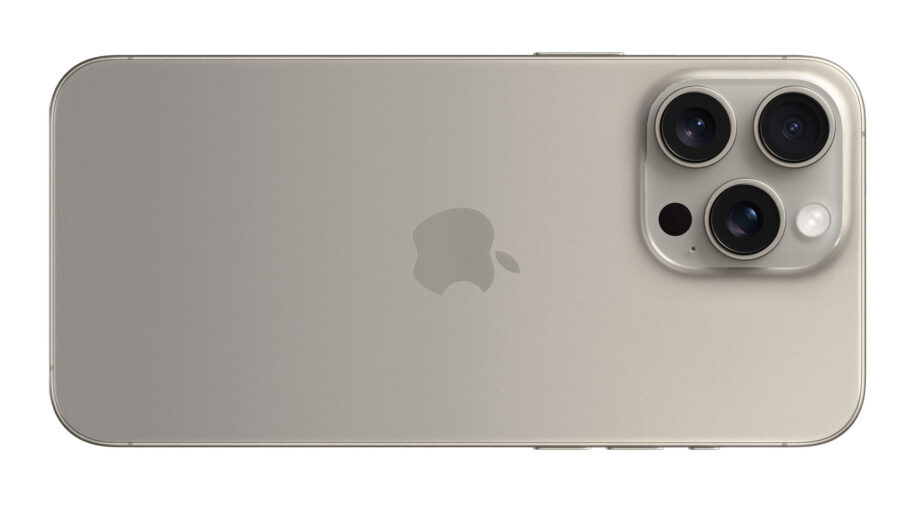
Enter the iPhone 15 Pro/Max
Many smartphones can take decent videos but the iPhone 15 Pro/Max is a bit different. As of the time of writing it is the only smartphone capable of ProRes or Log recording, and exporting the video feed to an external SSD out of its newly updated USB-C port. This, along with some impressive improvements to the camera modules put this specific device in a league of its own regarding professional video recording.
Does that mean smartphones can now replace professional cameras? Well, it’s a question with several speculative answers. Codecs and file quality are not the only parameters by which we judge a camera. Cases in which a professional filmmaker replaces their professional set with a smartphone are still rare. Such a scenario isn’t common due to various workflow issues, image quality, depth of field (with all due respect for the ever-improving “cinematic mode“), etc. However, many fields that once required professional gear no longer demand it. Areas like interior design, lifestyle, educational content, etc. which used to require professional work, now may require no more than a few successful smartphone shots posted on social media. Great. Now everyone can do it…
Do we even need a camera at the end of 2023?
By now I presume AI-based applications need no further introduction. With their lightning-fast evolution, it seems silly to mention the different applications available since such a list will be outdated as it’s published. What remains constant is the ability to scribble a prompt, and an image is made in a matter of seconds. No camera is needed, and no lighting is required. Will this render the actual act of photographic capture obsolete? I’d say that it may, but not so fast.
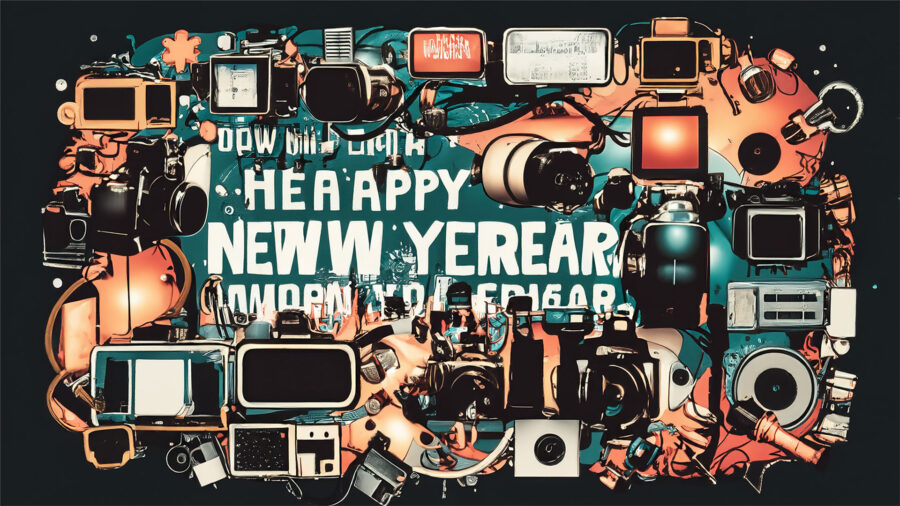
I believe the day when I’ll just have to prompt something like “Make me a Scorsese classic mafia feature starring Brad Pitt, Margot Robbie, Bruce Willis, young James Earl Jones, and a 70-year-old version of Taylor Swift” and get my Oscar-nominated masterpiece isn’t exactly around the corner. Not even a fully generated commercial clip. But I like how subject detection speeds up my work. I love the fact that if I want a square image to fit a 16:9 frame I no longer have to crop it as generative expansion is right there at my fingertips. This is also the case with auto-generated subtitles and cuts based on deleting text. The next level is a slight change in the text that will be applied to the filmed speaker. Auto translation and compatible dub are not that far, as can be seen here, at Adobe’s #ProjectDubDunDub.
So just as smartphones won’t directly replace professional filmmaking gear, AI won’t directly replace filmmaking. It will, and already does, speed up workflows, cut costs, and provide more and more individuals with powerful storytelling tools. That’s not always a good thing, to say the least.
Great. Now everyone can do it. (3.0)
Well, is it a matter of pure chance that most arguments against the rise of content-generating algorithms and applications seem like replicas of arguments against every new tech-based media? Yet again a parallel line is drawn between these revolutions, whose essence is the rapid creation of abundant creative content – new tools will not directly replace old tools. Generative AI (Artificial General Intelligence) will not replace the pencil, keyboard, camera, or microphone, but it will certainly allow us to use these tools less and create much more content, perhaps even of higher quality, in a shorter time and with considerably reduced human effort. This is democratization, for better or worse.
What do you guys think? What was the biggest innovation of 2023 and what do you predict for 2024? Let’s discuss this in the comment section!






